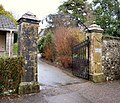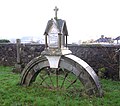
West Norwood Cemetery is a 40-acre (16 ha) rural cemetery in West Norwood in London, England. It was also known as the South Metropolitan Cemetery. One of the first private landscaped cemeteries in London, it is one of the "Magnificent Seven" cemeteries of London, and is a site of major historical, architectural and ecological interest.

Anfield Cemetery, or the City of Liverpool Cemetery, is located in Anfield, a district of Liverpool, Merseyside, England. It lies to the northeast of Stanley Park, and is bounded by Walton Lane to the west, Priory Road to the south, a railway line to the north, and the gardens of houses on Ince Avenue to the east. The cemetery grounds are included in the National Register of Historic Parks and Gardens at Grade II*.

Arnos Vale Cemetery, in Arnos Vale, Bristol, England, was established in 1837. Its first burial was in 1839. The cemetery followed a joint-stock model, funded by shareholders. It was laid out as an Arcadian landscape with buildings by Charles Underwood. Most of its area is listed, Grade II*, on the Register of Historic Parks and Gardens of special historic interest in England.

York Cemetery is a cemetery located in the city of York, England. Founded in 1837, it now encompasses 24 acres and is owned and administered by The York Cemetery Trust with support of the Friends of York Cemetery. It is situated on Cemetery Road in the Fishergate area of York. It has approximately 28,000 graves and over 17,000 monuments, six of which are Grade II-listed. The chapel is a Grade II* listed building, while the gatehouse, gate and railings are Grade II. The cemetery as a whole is a Grade II* listed park and garden. The architect of the buildings and designer of the grounds was James Pigott Pritchett.

The City Road Cemetery is a cemetery in the City of Sheffield, England, which opened in May 1881 and was originally called Intake Road Cemetery. Covering 100 acres (40 ha), it is the largest of the municipal cemeteries in Sheffield and contains the head office for Bereavement Services in Sheffield. The cemetery contains Sheffield Crematorium, whose first cremation was on 24 April 1905.

St Pancras and Islington Cemetery is a cemetery in East Finchley, North London. Although it is situated in the London Borough of Barnet, it is run as two cemeteries, owned by two other London Boroughs, Camden and Islington. The fence along the boundary which runs west to east between the two parts of the cemetery has been removed, although the line of it is still marked.

Southern Cemetery is a large municipal cemetery in Chorlton-cum-Hardy, Manchester, England, 3 miles (4.8 km) south of the city centre. It opened in 1879 and is owned and administered by Manchester City Council. It is the largest municipal cemetery in the United Kingdom and the second largest in Europe.

The City of London Cemetery and Crematorium is a cemetery and crematorium in the east of London. It is owned and operated by the City of London Corporation. It is designated Grade I on the Historic England National Register of Historic Parks and Gardens.
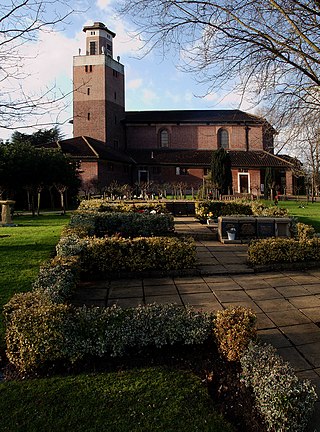
East Finchley Cemetery is a cemetery and crematorium in East End Road, East Finchley. Although it is in the London Borough of Barnet, it is owned and managed by the City of Westminster.

Locksbrook Cemetery is a municipal cemetery located in Lower Weston, Bath, England. It was opened in 1864 as Walcot Cemetery, and occupies 12 acres (4.9 ha), originally serving the parishes of Walcot, Weston and St Saviour's. The cemetery was closed for general use in 1937 with over 30,000 interments there, though additional burials in existing graves continue. The majority of the cemetery was for about 29,500 burials from Walcot parish, with the north of the cemetery for Weston and St Saviour parishes.

Reading Old Cemetery is situated in the eastern part of Reading, Berkshire, England. It is located immediately to the east of Cemetery Junction, a major road junction in Reading. The cemetery is Grade II listed.

The English coastal city of Brighton and Hove, made up of the formerly separate Boroughs of Brighton and Hove in East Sussex, has a wide range of cemeteries throughout its urban area. Many were established in the mid-19th century, a time in which the Victorian "cult of death" encouraged extravagant, expensive memorials set in carefully cultivated landscapes which were even recommended as tourist attractions. Some of the largest, such as the Extra Mural Cemetery and the Brighton and Preston Cemetery, were set in particularly impressive natural landscapes. Brighton and Hove City Council, the local authority responsible for public services in the city, manages seven cemeteries, one of which also has the city's main crematorium. An eighth cemetery and a second crematorium are owned by a private company. Many cemeteries are full and no longer accept new burials. The council maintains administrative offices and a mortuary at the Woodvale Cemetery, and employs a coroner and support staff.

Overleigh Cemetery is a large municipal burial ground adjacent to the approaches to Grosvenor Bridge on the south side of the River Dee in Chester, Cheshire, England. The cemetery was created in the mid-19th century by a private company but was taken into public ownership in the 1930s. The original part of the cemetery is listed at Grade II in the National Register of Historic Parks and Gardens. Since 2009, it has been owned and managed by the unitary authority Cheshire West and Chester.
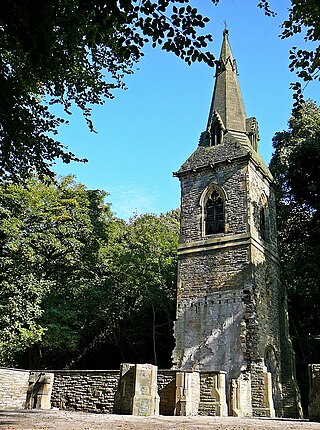
Stoney Royd Cemetery is a cemetery in Halifax, West Yorkshire, England.

Weaste Cemetery, previously known as Salford Borough Cemetery, is a public Grade II listed Victorian cemetery in Weaste, Salford. Opened in 1857, it is the oldest of Salford's four cemeteries, covering 39 acres (16 ha) and containing over 332,000 graves. It was established due to the overcrowding of churchyards, officially opening on 1 September 1857, with its first interment being Joseph Brotherton on 14 January 1857. The cemetery, which was bombed during the 1940 Manchester Blitz, now features a heritage trail and guided tours, with several Grade II listed monuments. It also holds graves of 373 Commonwealth service personnel from both World Wars, with special memorials and listings for those buried abroad and in unmarked graves.
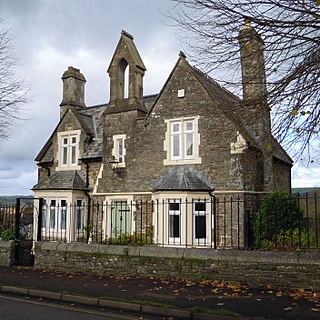
Barnstaple Cemetery is the burial ground for the town of Barnstaple in Devon and is managed by North Devon Council.

West Street Cemetery on West Street in Farnham in Surrey is one of four cemeteries in the Farnham area owned and maintained by Farnham Town Council. The two Cemetery chapels have been Grade II listed buildings on the Historic England Register since 1990.

Nottingham Road Cemetery is a municipal cemetery in Chaddesden, an inner suburb of Derby, in central England. It was established in 1855 to provide more burial capacity for the rapidly growing town.

Louth Cemetery on London Road is the cemetery for Louth in Lincolnshire. Opened in 1855, the cemetery's distinctive gate lodge and two cemetery chapels were designed by Lincoln architects Bellamy and Hardy. The gate lodge is a Grade II listed building on the register of Historic England.




